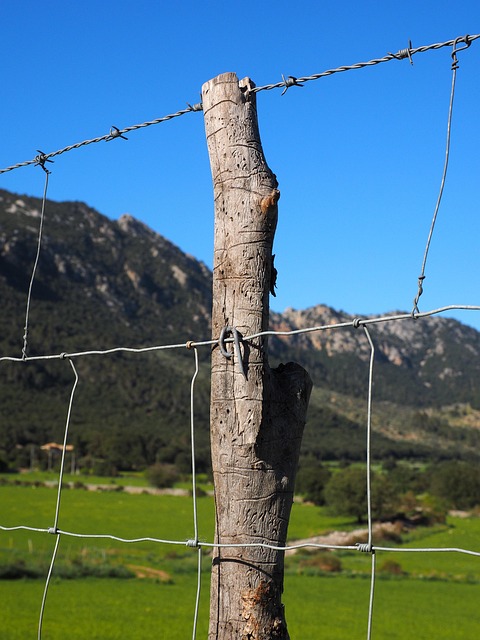DIY Fence Installation: A Guide for New Bedford Homeowners
Adding a fence to your New Bedford, Massachusetts yard is a rewarding project that enhances curb appeal and provides privacy. This guide offers step-by-step instructions to walk you through the entire process, from preparing your yard to installing posts and adding functional gates. Whether you’re opting for a traditional wood fence or a modern metal option, these DIY tips ensure a strong and beautiful result, allowing you to transform your outdoor space on a budget.
- Prepare Your New Bedford Yard for Fencing
- Choose the Right Fence Type and Material
- Measure and Plan Your Fence Layout
- Digging and Marking Post Holes
- Install Fence Posts and Railings
- Add Gates and Accessories for Functionality
Prepare Your New Bedford Yard for Fencing
Before installing a fence, preparing your New Bedford yard is crucial. Start by clearing the area where the fence will be placed. Remove any bushes, trees, or debris that might obstruct the installation process. It’s also essential to mark any underground utilities using a call-before-you-dig service to ensure safe and undisturbed fencing.
Next, assess the layout of your yard and decide on the best placement for your fence. Consider factors like existing structures, landscaping, and desired privacy levels. Draw a rough plan or consult with a professional to determine the exact dimensions and style that will complement your yard’s unique features.
Choose the Right Fence Type and Material
When it comes to DIY fence installation, selecting the appropriate type and material is a crucial first step for New Bedford homeowners. The right fence should not only complement your home’s aesthetic but also serve its intended purpose—whether it’s providing privacy, security, or defining your property lines. Consider factors like climate conditions in Massachusetts; durable materials like vinyl, wood treated for outdoor use, or chain link offer the best resistance to harsh weather.
Think about your specific needs and preferences as well. For instance, if privacy is a priority, opt for solid fences made from wooden boards or composite materials. If you’re looking for something more visually appealing and low-maintenance, vinyl fencing could be an excellent choice. Additionally, consider the fence’s height and style to ensure it aligns with local regulations and enhances your outdoor space.
Measure and Plan Your Fence Layout
Before you start installing your new fence, take the time to measure and plan its layout. This step is crucial for ensuring a seamless fit and a professional finish. Begin by assessing the perimeter of the area where you want to place the fence. Use measuring tape to mark out the exact dimensions, taking note of any existing structures or trees that might affect the placement. Create a detailed plan, including the number of posts required and their spacing, considering both local building codes and the aesthetic you desire.
A well-thought-out plan will make the installation process much smoother, allowing you to visualize the fence’s alignment, height, and overall design before breaking ground. This preparation can save you time, money, and potential headaches down the line.
Digging and Marking Post Holes
Before installing any fence, digging and marking post holes is a crucial step in New Bedford. Homeowners should carefully assess the area where the fence will be placed, considering both the layout of existing structures and vegetation to ensure optimal placement of the posts. It’s essential to use stakes and string to mark the intended fence line as a guide for digging.
When digging the holes, it’s recommended to go at least one-third deeper than the length of the fence posts to provide stable support. Using a post-hole digger or shovel, carefully excavate the soil while maintaining a level base for each hole. Ensure that the holes are evenly spaced according to your fence design and local building codes.
Install Fence Posts and Railings
When installing fence posts and railings, start by marking out the perimeter of your desired fence line with string or spray paint. Dig holes for each post, ensuring they are deep enough to provide stability. Place concrete in the holes and let it set before inserting the posts. Use a level to ensure the posts are straight and secure.
For railings, measure and cut posts to the appropriate height, considering local building codes. Attach the rails to the posts using brackets, securing them with screws or nails. Make sure the railing is securely fastened and can support the weight it will bear, especially if it’s for a stairwell or balcony.
Add Gates and Accessories for Functionality
Adding gates and accessories is an essential step in completing your DIY fence installation. Gates allow for convenient access to your property, providing both functionality and security. Choose a gate style that complements your fence design—swing gates are classic, while sliding gates can be more space-efficient. Consider adding extra features like a latch or lock for enhanced safety.
Accessories such as post caps, lights, and privacy panels can further enhance the look and utility of your new fence. Post caps not only add aesthetic appeal but also protect the top of your fence posts from weather damage. Outdoor lighting installed along your fence can improve security and create a welcoming ambiance. Privacy panels are ideal for blocking unwanted views while still allowing light to pass through.
